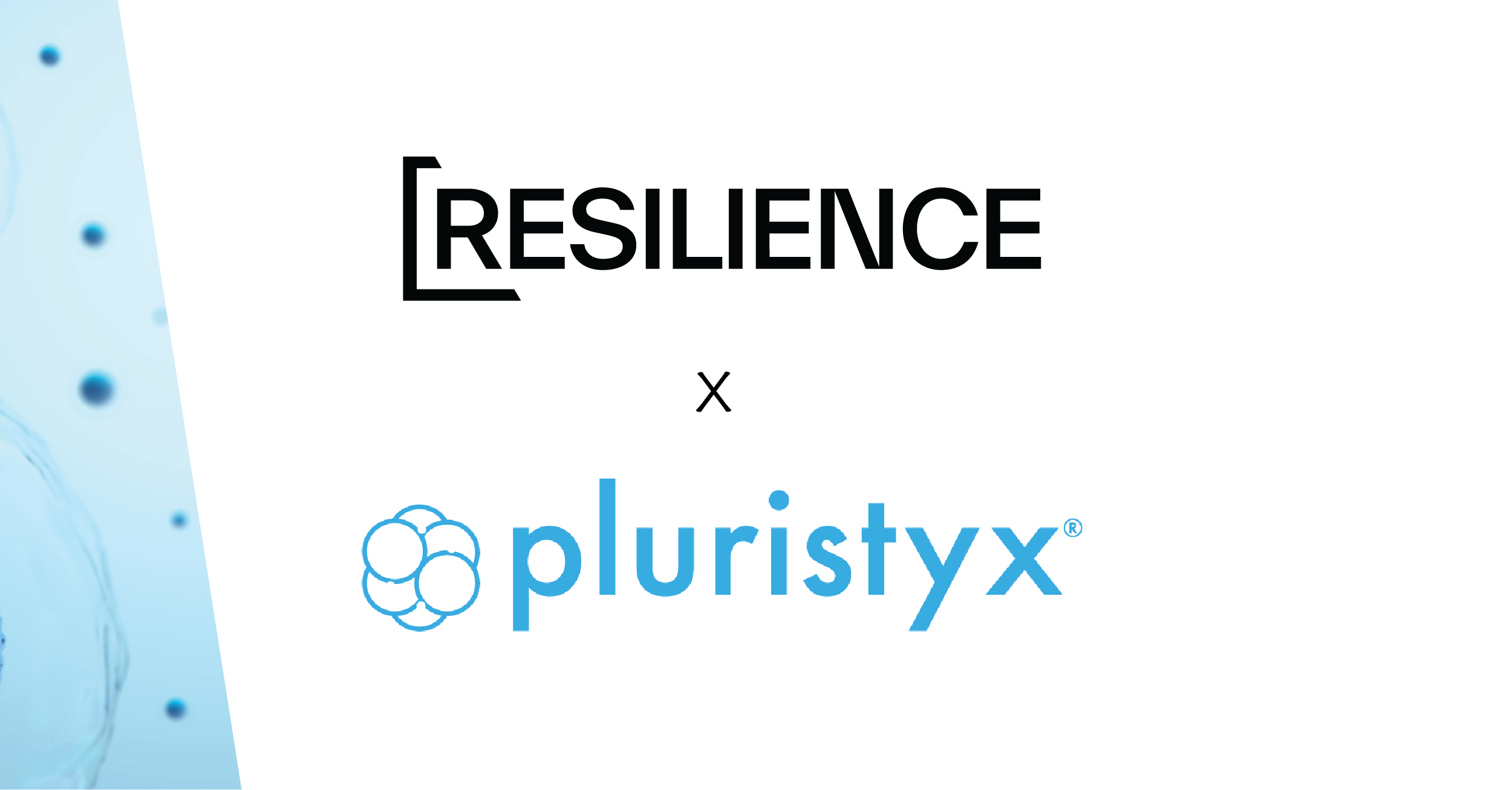.png)
CDMOs Are Making Their Supply Chains More Resilient & Secure
Published by Drug Development & Delivery
Growing R&D activities, personalized medicines, large-scale production of biologics, and access to new technologies are some of the biggest reasons why the contract development and manufacturing organization (CDMO) market is expected to practically double from $168 billion this year to $318 billion by 2034.1
“Contract development services are in high demand as pharmaceutical companies face challenges in bringing products from development to market quickly and efficiently,” says David Crawford, Associate Director – Manufacturing, Almac Pharma Services. “Companies are increasingly seeking development-driven CDMOs that offer fully integrated services, ensuring a seamless transition from pharmaceutical development to industrial-scale manufacturing. This approach accelerates time-to-market, mitigates risks, and optimizes resources.”
Mitigating risk and optimizing resources are also presenting challenges for CDMOs, particularly in the current geopolitical environment: the uncertainty of potential tariffs placed on incoming materials; waiting to see if The Pills Act passes; and the passage of The BioSecure Act – the latter two borne out of the pandemic. The PILLS Act (aka Producing Incentives for Long-term Production of Lifesaving Supply of Medicines) was introduced in February by Representative Claudia Tenney (NY-24) to promote the domestic production of generic medicines through tax incentives and reducing reliance on India and China for these drugs. Similarly, The BioSecure Act prohibits executive agencies (i.e., FDA, CDC, and NIH) from contracting or extending loans or grants to any company with current or future commercial arrangements with a “biotechnology company of concern,” such as those located in China.
As a CDMO founded in response to global supply challenges during the COVID-19 pandemic, Resilience has a deep interest in the evolving landscape of trade policies and tariff regulations. “We recognize the uncertainty these changes can create for our partners,” says Cyril Kelly, Senior Manager, Procurement-Distribution, Logistics, Warehouse and Transportation. “We’ve begun taking steps to help mitigate concerns. Through continuous, ongoing monitoring, our supply chain team is closely tracking tariff developments and assessing the impact on suppliers and products based on country of origin while also considering how to minimize disruptions to overall supply chain. We’re leveraging supply chain engineering to reduce risk exposure and deliver targeted support that helps our partners interpret Harmonized Tariff Schedule classifications, assess general tariff exposure, and maintain compliance with international trade laws. We can facilitate conversations with trusted partners who specialize in cross-border transaction assessments to help further navigate these changes with confidence and help alleviate risk.”
In fact, many life science leaders view the current geopolitical conditions as an opportunity. “Contract manufacturing appears to be more in demand, perhaps due to the global geopolitical conditions creating uncertainty in the marketplace,” says Janice Cacace, Executive Director Pharmaceutical Development, Bend Bioscience. “With the push toward US manufacturing, and uncertainty in the feasibility of some offshore supply, plus tariff negotiations, we have seen an increase in requests for tech transfer projects for clinical and commercial manufacturing to customers who are looking to de-risk their overseas supply chain. We can no longer rely on the ‘just- in-time’ operations of previous years, and the tariff situation has become a key risk factor. So, we are shoring up the supply chain and sourcing alternate suppliers as risk dictates. We are derisking by sourcing materials earlier in the development phase through to commercial manufacturing to ensure robust and continuous supply. This has resulted in the discovery that several basic OSD ingredients have different behaviors in formulations, despite being similar in description. Upfront understanding of these differences will save time and decrease risk in any future development program.”
In addition to sourcing earlier, CDMOs are strengthening their supply chains in other ways as well. “To navigate these geopolitical uncertainties, we are enhancing our supply chain resilience by diversifying our supplier base and investing in domestic manufacturing capabilities,” says Dr. Richard Johnson, Chief Scientific Officer & Founder at Upperton Pharma Solutions. “These measures aim to mitigate risks, ensuring uninterrupted service to our clients.”
Likewise, Aragen has proactively implemented a dual-sourcing strategy to improve supply chain resilience for critical active/inactive materials, functional and specialized excipients, consumables and packaging components, particularly those sourced from geopolitically sensitive regions. “We are also expanding our qualified vendor base across multiple geographies, to ensure business continuity and regulatory compliance,” says Vaibhav Sihorkar, Vice President & Head – Formulations Solutions, Aragen Life Sciences Ltd. “These efforts are closely aligned with our supply chain digitization and quality risk management practices, allowing us to maintain reliable clinical and development supply timelines for our global clients.”
While pharmaceuticals were initially exempt, the possibility of significant tariffs on pharmaceutical imports could have profound implications for the global pharmaceutical industry and CDMOs with operations largely outside the US. By concentrating on cost management, cultivating strategic partnerships, prioritizing robust compliance, proactively managing risk, and embracing holistic supply chain transformation, CDMOs are proactively turning tariff-related complexities into competitive advantages.
At Abzena, for example, the company is reshaping its supply chain strategy to thrive in a complex global market. “In the current geopolitical landscape, and among recent discussions about tariffs on pharmaceutical products and the BioSecure Act, our fully integrated, US-based manufacturing model offers a strategic advantage, often delivering a 25% price edge over many international competitors,” says Dr. Campbell Bunce, Chief Scientific Officer of Abzena. “By leveraging domestic partners for sterile filling, lyophilization, and packaging, we effectively manage the entire supply chain from monoclonal antibody (mAb) production to final drug product within the United States. This approach helps us minimize the unknown risks posed by global trade shifts for our customers.”
Resilience: Robust Data Platform Eliminates Inefficiencies
Resilience provides development and drug substance and drug product manufacturing for biologics, vaccines, cell and gene therapy, and nucleic acids, hands-on support and regulatory guidance, and scale-up to commercial drug product manufacturing – all within North America. Resilience’s quality procedures and regulatory experience safeguard BLA filings, prioritizing overall program success. Their network of facilities was designed to meet the highest industry standards, ensuring quality assurance and regulatory integrity that mitigate risks for its partners’ IND filings and clinical trial timelines. They are ready to support new platform technologies, process and analytical development programs, or drug substance or drug product manufacturing needs, while meeting timelines with dedicated capacity, and the ability to tailor resources to support innovative projects.
The CDMO is witnessing growing demand in cell therapy, drug substance biologics, and sterile fill/finish for injectable products, particularly where downstream manufacturing and commercialization expertise are critical. One especially promising opportunity is the accelerating momentum behind GLP-1 therapeutics, which have expanded beyond diabetes management to include obesity, weight loss, and even conditions like sleep apnea.
Resilience has built a data platform that supports data processing and helps to increase efficiencies by streamlining cross-organizational communications between procurement, finance, supply chain operations, project management, and more. The program interconnects 30 data products across six domains, enabling near real-time reporting for more than 25 applications and reducing human error by eliminating the need for manual data transfer and transcription.
“This allows us to provide a transparent and centralized visibility of quality, ERP, lab, and process monitoring data to our clients in almost real-time and allows us to accelerate manufacturing timelines by reducing batch cycle times,” says Chuck Lemire, Vice President, Enterprise Systems, Resilience. “While currently used as an internal tool, Resilience is now transforming our cloud-based capability into an app that clients can utilize to remotely and securely access their data, see the status of their program, and integrate to their own systems.”
Following tech transfer for development, a client approached Resilience with an incredibly tight timeline to produce a small drug substance batch. Their process was not yet very robust and was at risk for fairly routine failures, explains Mr. Lemire. The Resilience team was enlisted to fortify the process to help ensure the run would be successful so they could maintain their timeline.
“Utilizing our industry-leading Data Platform allowed us to monitor critical attributes in near real-time, with automated alerts for any trend towards out of specification,” he says. “Additionally, we synced video of the bioreactor to the data sets to provide our scientists immediate observation into the operation. This empowered them to take action the moment an alert was sent. As we anticipated, there were issues during the run, however our team was able to intervene immediately and prevent any batch failure. Additionally, given the data sets recorded, we were able to provide development feedback to the client on how to improve their manufacturing process further. Overall, the combination of data, automation, and our experienced scientists facilitated successful completion of a critical asset and led to rapid improvement of their process.”
More insight from these and other life science leaders follows in this exclusive Drug Development & Delivery annual report.



